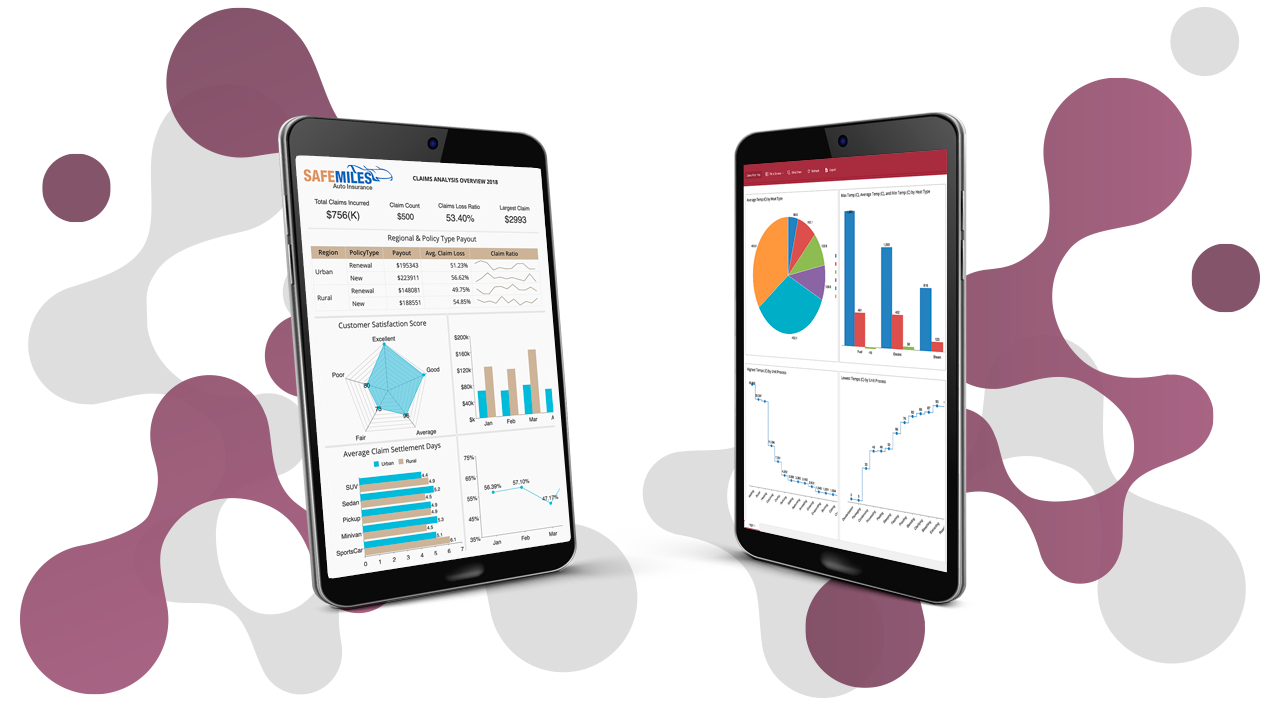Whether you’re an organization that uses analytics or a software vendor that needs to add BI features to your product, the ability to white label a solution can provide a number of benefits. And whether you call it white label analytics, white label BI, OEM BI or embedded BI, it’s all about customizing BI to suit your preferences.
Embedded analytics allows you to embed real-time reports and interactive dashboards—even self-service capabilities—within users’ standard workflows and applications. White label analytics is a subset of embedded analytics that allows you to create a customizable analytics solution embedded in your internal or commercial application, which is indistinguishable to users from their other workflows and applications.
Maybe you’re looking to embed analytics into a native application or as part of an enterprise deployment. Maybe you want to deploy standalone analytical applications, but with your corporate branding. Or maybe you’re a SaaS provider looking to embed OEM BI tools or an OEM analytics platform into your products to do more with your data: generate revenue, acquire customers, and prevent customer churn.
Whatever the case, white label analytics allows you to create reports and dashboards that look like they were created in-house with your own corporate branding and stylistic elements. Here are six key benefits of white label embedded BI:
- Stay focused on your core business
- Speed time to market
- Ensure brand consistency
- Increase user adoption
- Drive competitive advantage
- Stay on top of industry innovations
1. Stay focused on your core business
Many companies that use BI, or software vendors that incorporate analytics into their products, don’t have the in-house expertise or resources to build a full-fledged BI tool internally. Building embeddable BI modules requires an extensive level of technical knowledge, and you’ll need to keep up with best practices as the technology evolves—from learning new data visualization principles to UI and UX fundamentals—as well as data governance and security best practices.
With a white label analytics solution or OEM BI, your team can focus on your core business—and users can start benefitting from analytics within days—rather than attempting to build reports and dashboards from scratch. And, you won’t have to worry about the scope and cost of a build-your-own development spiraling out of control.
Building your own embedded BI solution can take years to plan, design, and develop—and customizations, delays, or complications can push that timeline out even further. Plus, there’s a learning curve, so you’ll need to invest time and money to get your team up to speed.
Embedded BI tools can be up and running in a matter of days or weeks—not months—by seamlessly integrating with existing internal or commercial applications. Data insights are available to any authorized user, even if they don’t have a background in statistical analysis. And that means you’ll achieve a faster time to market with products and services.
White labeling allows you to customize visual elements such as colors, fonts, and logos, so analytic elements seamlessly flow from your application rather than looking like a third-party add-on. In other words, to users, it’s indistinguishable from their business application or SaaS product. For ISVs and SaaS providers, a white label OEM BI solution gives you the advanced analytics capabilities you need while providing a seamless user experience with your product or application.
This also creates a visually appealing user experience with your own branding. And the same applies to sub-branding: If you host a multi-tenant application where each tenant requires its own branding to be displayed, you can customize your white label analytics solution for multiple brands.
User adoption is critical to the success of any IT project. You can have the best technology, but if no one uses it, then your implementation will be a failure. Allowing your users to engage with data in a single application—rather than having to export data into other tools or spreadsheets, like Excel—helps to reduce complexity and confusion.
Because it’s part of an existing application they use regularly and they aren’t forced to login to other applications to do their work, this promotes “application stickiness.” And having the same look and feel as internal applications creates a seamless user experience, which helps to drive user adoption. That, in turn, reduces data silos and creates a data-driven culture.
5. Drive competitive advantage
A white label analytics or OEM BI solution allows users to take action on data, right from their day-to-day workflows, without shifting to other tools. With self-service BI capabilities, for example, users can create their own reports and dashboards from applications they use regularly, so they’ll engage with business data more frequently and with ease. This can increase productivity and drive competitive advantage—without a big learning curve.
6. Stay on top of industry innovations
A white label BI solution means you don’t have to worry about product updates—you’ll always have the latest version. With a market-driven platform, you’ll get the latest updates and releases from experts in BI tools rather than depending on internal resources. You can also bring in cloud-based sources, like Snowflake. You'll also get instant access to the latest industry innovations in areas like self-service features, artificial intelligence and predictive analysis, without having to lift a finger.
How to select a white-label BI solution
There are a lot of BI options out there, whether you’re looking to use analytics in your business or you’re an ISV, system integrator, or SaaS provider that needs to embed analytic capabilities. When choosing embeddable white label analytics or OEM BI, here are a few things to look for:
Open and comprehensive API: This allows you to seamlessly integrate with any internal or commercial application. Enhanced white labeling functionality should support the customization of a number of embedded BI elements, such as custom portal themes, document themes, logos, and UI customizations, among others.
Low-code embedded BI: If you’re a software developer, you can increase developer productivity with low-code embedding. Look for a solution that supports OEM installation and embedding, and can integrate with common development platforms and frameworks such as JavaScript, React, Angular, PHP, and .NET.
Native multi-tenant support: If you have multiple customers, your BI solution should offer built-in multi-tenant support to manage your BI resources across all customers from a single environment and provide predictable TCO.
Security: Look for a solution that allows you to configure security rules such as role-based permissions and extensible security with user context, as well as external indentity services such as oAuth, Azure AD, OpenID, and SAML—so you don’t have to reinvent the wheel.
Scalability: You can lower or maintain your BI budget with flat-fee server-based licensing that allows you to scale your application and user base without additional costs, such as per-user fees.
Ultimately, a white label BI solution should save time, money, and resources—and help you gain insights to innovate and compete with your core offerings. To learn more about white label BI solutions, contact Wyn for a custom demo and free trial.
Understand the Story Behind Your Data
Wyn is a web-based BI and data analytics platform that provides greater insight into your data.
Wyn offers built-in tools for report and dashboard creation, data governance, security integration, embedded BI, automated document distribution, and a business-user-friendly interface for self-service business intelligence.





























